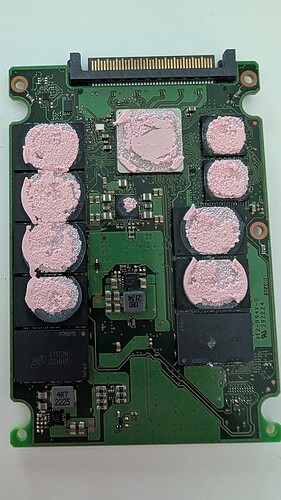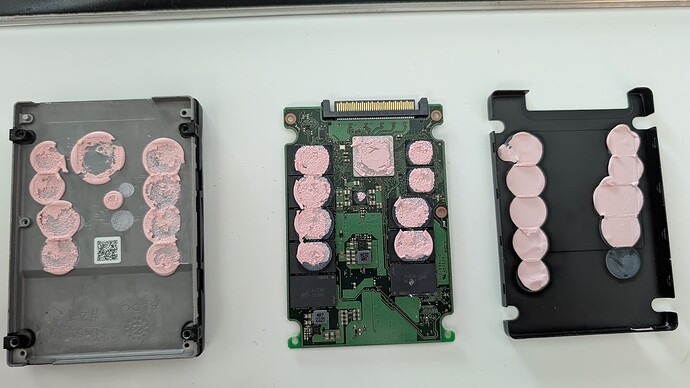We recently had four of these electrically fail from two different TrueNAS servers. These servers are used as encrypted transfer appliances for the transfer of large customer databases to our environment so we can work on them. The drives are still under warranty, but Micron requires that the defective drives are returned. Our security policy requires that all drives possibly containing PHI are wiped and with these drives being electrically dead, we can’t guarantee that so the drives will be shredded instead.
I couldn’t find any pictures of the U.2 variant of these drives so I thought I’d take one apart before they were destroyed.
1 Like
Can you describe this aspect a little more?
Were the drives recognizable at all when connected to a computer?
If yes, could they be written to?
Have you been able to confirm if there is a firmware issue? Four drives is a lot unless these drives are under extremely heavy use.
Are you collecting any statistical data or just not using this vendor anymore?
Just curious
When I say electrically dead, I mean that they do not detect in any fashion. We moved them around to different slots in the server and plugged them into a separate computer via PCI to U.2 adapter card. Not only do they not register with Micron’s Storage Executive software, they don’t even initialize as PCI express devices of any kind. The server’s IDRAC shows them as PCI express devices but won’t give any information about them at all.
We have thousands of mechanical drives, SATA SSDs, SAS SSDs, and NVME SSDs. They range from white box drives we installed ourselves, to TrueNAS Enterprise covered drives, and even Netapp drives. We see a handful of failures per year of all types. The last time we had anything close to this many failures of the same model was back when we purchased a ton of the Seagate X12 12TB SAS drives that ended up with over 50% failure rates.
We have no idea why these drives failed. A check of Micron’s website shows a newer firmware for the SED variant of this model, but that’s it. According to Micron’s storage software, these drives are using the latest firmware. I did look through the patch notes of the SED drive firmware and didn’t see anything to explain our issues. A SMART check of a working drive showed that write endurance was still technically 100% because so little had been written to them.
Well I hope you don’t see too many more failures like this.
I have heard of companies purchasing rather large lots of drives and having quite a few failure, but 50%, or even 30% seems unreasonable. Especially if you must physically destroy them vice being able to use the warranty. But I can relate, the government does the same thing. It is the cost of doing business with many companies, if not most.
There was a fairly widespread issue with the X12 Helium drives from Seagate. It was one thing to get a bad batch of sequential serial number drives from the factory. That’s more plausible and we’ve even seen it before. However, we started to suspect an issue when the replacements sent to us from Seagate started failing. We tried working with Seagate and, for a brief period, there was a program that Seagate implemented to handle issues with this model. I’d have to go dig, but it’s documented somewhere on the old TrueNAS forums. Eventually, we just took them out of service.
In last 3/4 of the year I’ve lost 5 Micron 7450 pro SSDs (heat sink with fins version). 4x7.68 TB and 1x15TB. I’ve lost approx. 80% of all of them. First I thought that the problem is in poor cooling as was already presented, but I’ve also lost an SSD with only one populated side where thermal paste was properly applied. All drives were cooled with dedicated fans and were used in workstations but far far from 1DWPW. Micron is no go for me in the next several years.
1 Like


